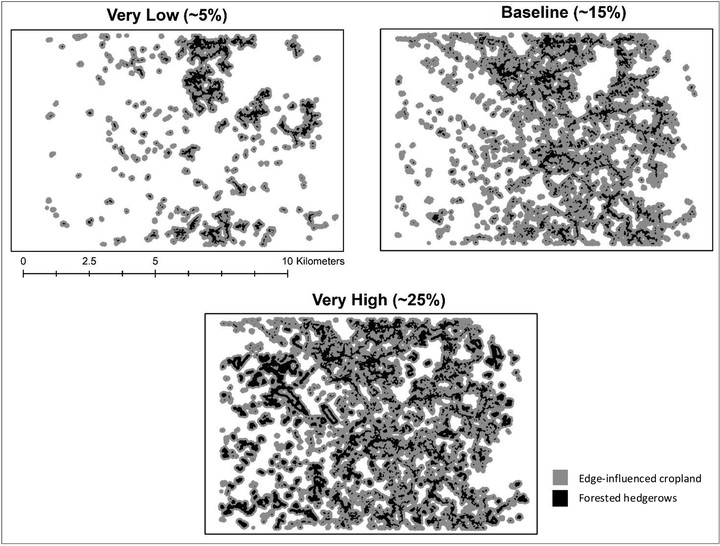Forest restoration scenarios produce synergies for agricultural production in southern Ethiopia

Abstract
Understanding the factors influencing agricultural productivity is vital to food security, especially for food insecure smallholder farmers. Within agricultural landscape mosaics, the arrangement of tree cover such as forests, trees, and hedgerows can positively or negatively impact agricultural productivity in fields. In such settings, forest restoration has the potential to impact food security goals in addition to the typical restoration goals of reversing land degradation and supporting carbon storage. Here, we compare and contrast forest restoration scenarios in order to explore whether there are ideal amounts and configurations of forests that optimize benefits for food production. To do so, we explored forest restoration scenarios in an agricultural-forest landscape in southern Ethiopia where previous research showed increased wheat productivity in sections of fields adjacent to forests. We used hypothetical historically-relevant and plausible future scenarios to examine the landscape-level implications of forest restoration on total wheat production. To accomplish this, we first characterized contemporary forest cover as well as long-term trends using remote sensing. Then, trends in forests and hedgerows were used to create a series of hypothetical yet realistic scenarios to explore trade-offs among total forest cover, its configuration, and total wheat production. From 1967-2013, analysis of historical aerial photography and Landsat imagery showed a general trend of reforestation (an 8% increase in forest cover). While the abundance of primary forests remained constant from 1986-2013, mixed vegetation expanded from 16 % to occupy 26 % of the landscape, generally in the form of small forest fragments with sparse tree cover. Our hypothetical reforestation and hedgerow planting scenarios found that field productivity increases near forest edges resulted in non-linear food production benefits with hedgerow expansion. Benefits to total landscape-level wheat production were almost twice as great when transitioning from low to medium tree cover than when transitioning from medium-high to high tree cover. Furthermore, the benefits of hedgerows on agricultural production were asymptotic; productivity gains eventually levelled off with increasing hedgerows. Our results highlight potential benefits of a landscape approach for enhancing smallholder agricultural productivity in southern Ethiopia and beyond. We argue that considering a landscape perspective can help support food security goals particularly within the context of climate change and should play a more prominent role in forest conservation and restoration.